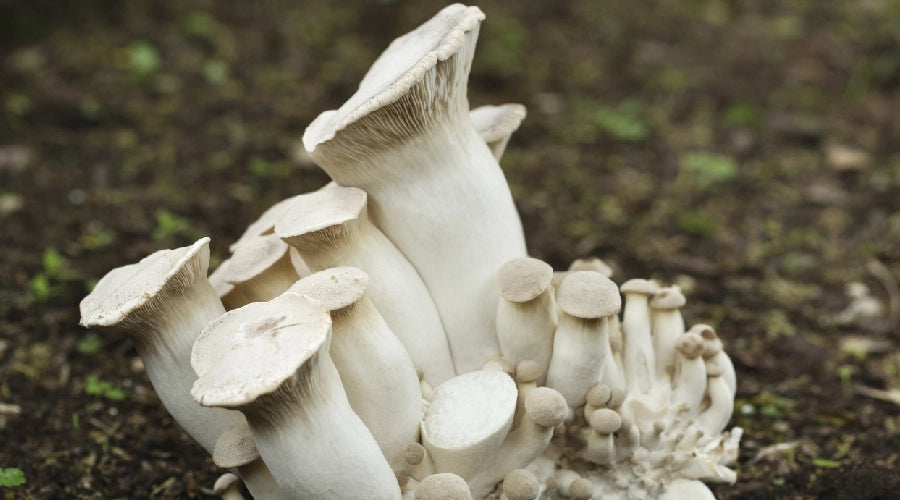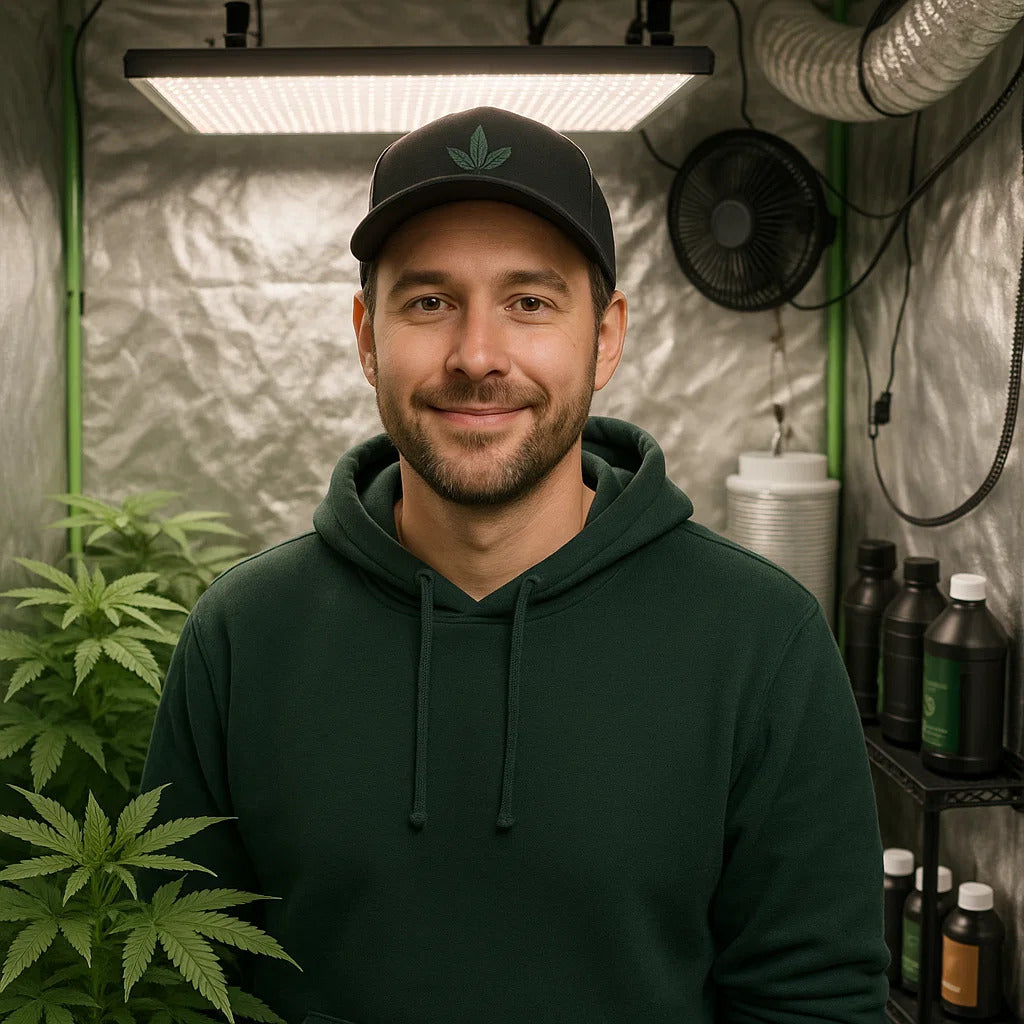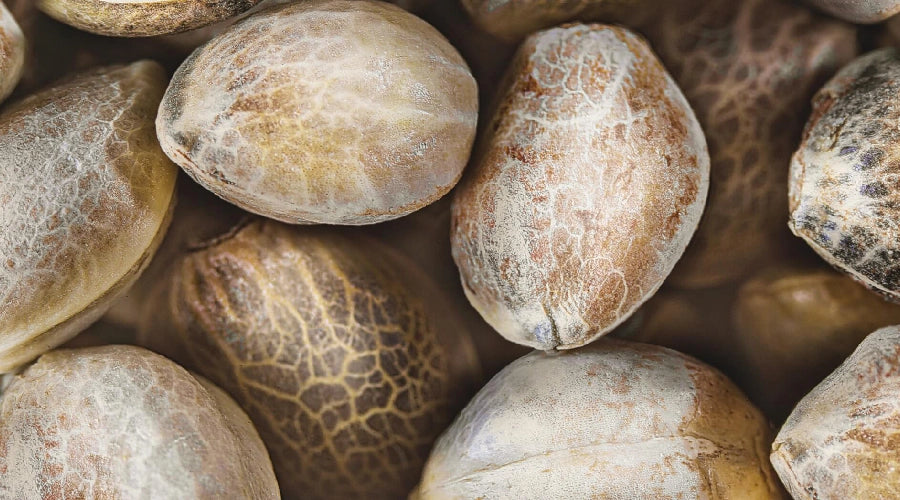
The Fascinating Process of How Mushrooms Grow: A Step-by-Step Guide
Mushrooms are fascinating fungi that grow in a variety of environments, from forests to fields and even in our homes. Understanding the process of how mushrooms grow can give us a deeper appreciation for these unique organisms.
How Mushrooms Grow
Mushrooms are the reproductive structures of fungi, which typically grow underground or in wood as mycelium, a network of fine, white, thread-like structures. The mycelium obtains nutrients by breaking down organic matter and converting it into energy. When the mycelium has obtained enough energy, it will begin to form a mushroom.

Once the mycelium is ready, it is transferred to the substrate, which is then placed in a controlled environment. The temperature, humidity, and light levels in the growing room are carefully monitored and adjusted to create the ideal conditions for mushroom growth. In addition, growers must maintain strict hygiene to prevent contamination by other fungi or bacteria, which can quickly spread and ruin an entire crop.
The process of mushroom growth begins with the formation of the mushroom's primordia, tiny bumps that form on the mycelium. The primordia will grow into a structure known as the stipe, or stem, which supports the mushroom's cap. The cap of the mushroom contains the gills, or spore-producing structures, which are covered by the veil. As the mushroom continues to grow, the veil will break, allowing the spores to spread and produce spores.
The conditions for mushroom growth are specific and include the right temperature, humidity, and light levels. In addition, mushrooms require a source of nutrition, which they obtain from the substrate on which they are growing. Substrates can range from organic matter such as soil or compost to logs or other woody materials.
Once the mushrooms have grown, they will begin to release their spores, which will travel on the wind and land on new substrates. These fragments will then grow into new mycelium, which will eventually form new mushrooms. This cycle of growth and reproduction is continuous, allowing mushrooms to continue to spread and colonize new areas.
Benefits of Mushrooms Other Than Nutritional Value
Mushrooms play important roles in the ecosystem. Some species of mushrooms are decomposers, breaking down dead organic matter and returning nutrients to the soil. This process helps to maintain the balance of the ecosystem by recycling nutrients and promoting the growth of new plants.
Mushrooms form symbiotic relationships with other organisms. Mycorrhizal fungi, for example, form relationships with the roots of plants, providing the plants with essential nutrients and, in return receiving carbohydrates from the plants. This mutualistic relationship is essential for the health and survival of both the fungi and the plants.
In addition to their many benefits, mushrooms also play an important role in scientific research and discovery. Mycologists, the scientists who study fungi, have discovered many new species of mushrooms, some of which have unique and valuable properties. For example, some species of mushrooms produce compounds that have antibacterial, antiviral, and anti-inflammatory properties. These compounds are being studied for their potential to treat a variety of diseases and conditions, from cancer to Alzheimer's disease.
Mushrooms also play a key role in the study of evolution and biodiversity. By studying the relationships between different species of fungi and their evolutionary history, scientists can gain a deeper understanding of the diversity of life on our planet and the processes that drive evolution.
In addition, mushrooms have also been studied for their potential as bioremediation agents. Certain species of fungi have the ability to break down toxic compounds and pollutants in the environment, making them valuable tools in the cleanup of contaminated sites.
Mushrooms are Sources of Food, Medicine and Health
Many species of edible mushrooms, such as shiitake, oyster, and button mushrooms, are widely cultivated for their delicious flavor and nutritional value. In traditional medicine, mushrooms have been used for centuries to treat a variety of ailments, from boosting immunity to reducing inflammation.
It is important to note that not all mushrooms are safe for consumption. Some species of mushrooms are highly toxic and can cause serious health problems if consumed. Therefore, it is crucial to properly identify mushrooms before consuming or using them for medicinal purposes.
The Cultivation of Mushrooms
The cultivation of mushrooms can be a sustainable and eco-friendly method of food production. By using waste materials such as straw and sawdust as substrates, mushroom cultivation can help to reduce waste and conserve natural resources. In addition, mushrooms can be grown indoors in controlled environments, reducing the need for large amounts of land and water, making it an ideal choice for urban agriculture.
In recent years, there has been a growing interest in growing mushrooms at home, as a hobby, or for personal consumption. This has been made possible by the availability of easy-to-use kits and resources, which provide all the materials and instructions needed to grow a variety of different mushrooms.
In conclusion, the growth and cultivation of mushrooms is a complex process that requires the right conditions and techniques to be successful. From commercial growers to home hobbyists, the cultivation of mushrooms offers a variety of benefits, including sustainable food production and opportunities for personal growth and enjoyment. Understanding the process of mushroom growth and cultivation can help us appreciate these unique organisms and the many ways they can benefit our lives.

Lena Myles
I'm a mushroom enthusiast and home cook based in Oregon. I'm passionate about foraging and creating fungi-focused recipes, especially delicious, plant-based dishes using gourmet mushrooms like trumpet, shiitake, and oyster. When I’m not in the kitchen, you’ll usually find me wandering the woods in search of new wild flavors.


